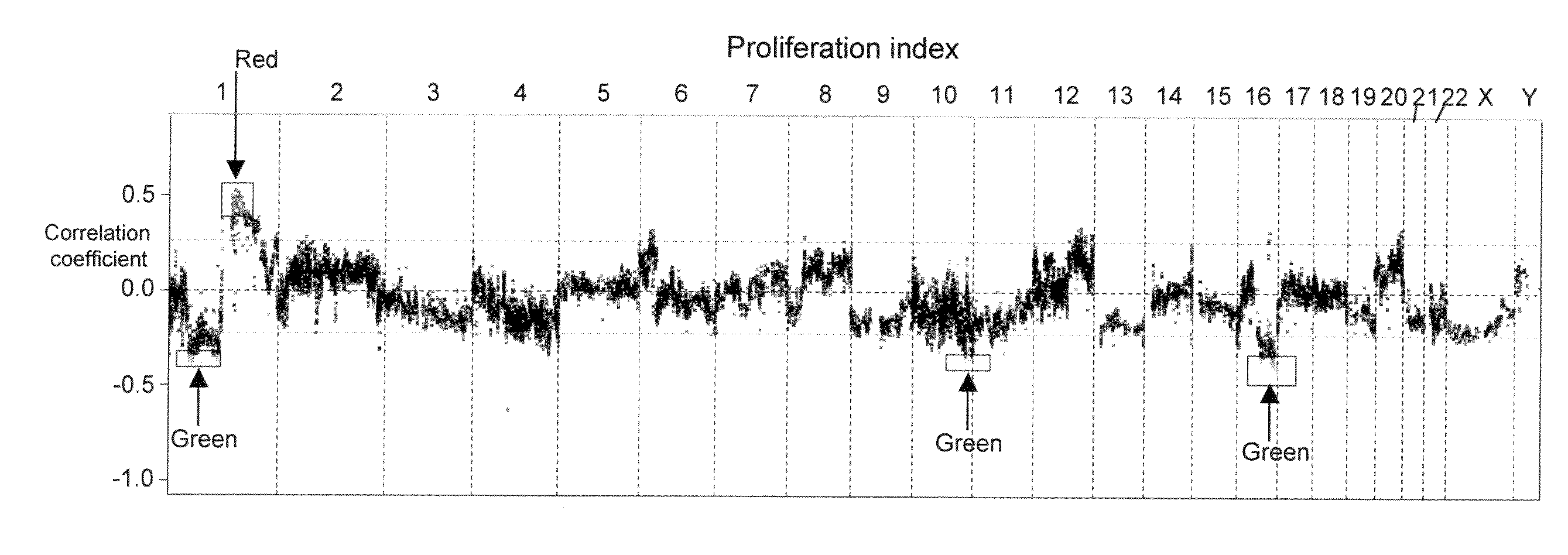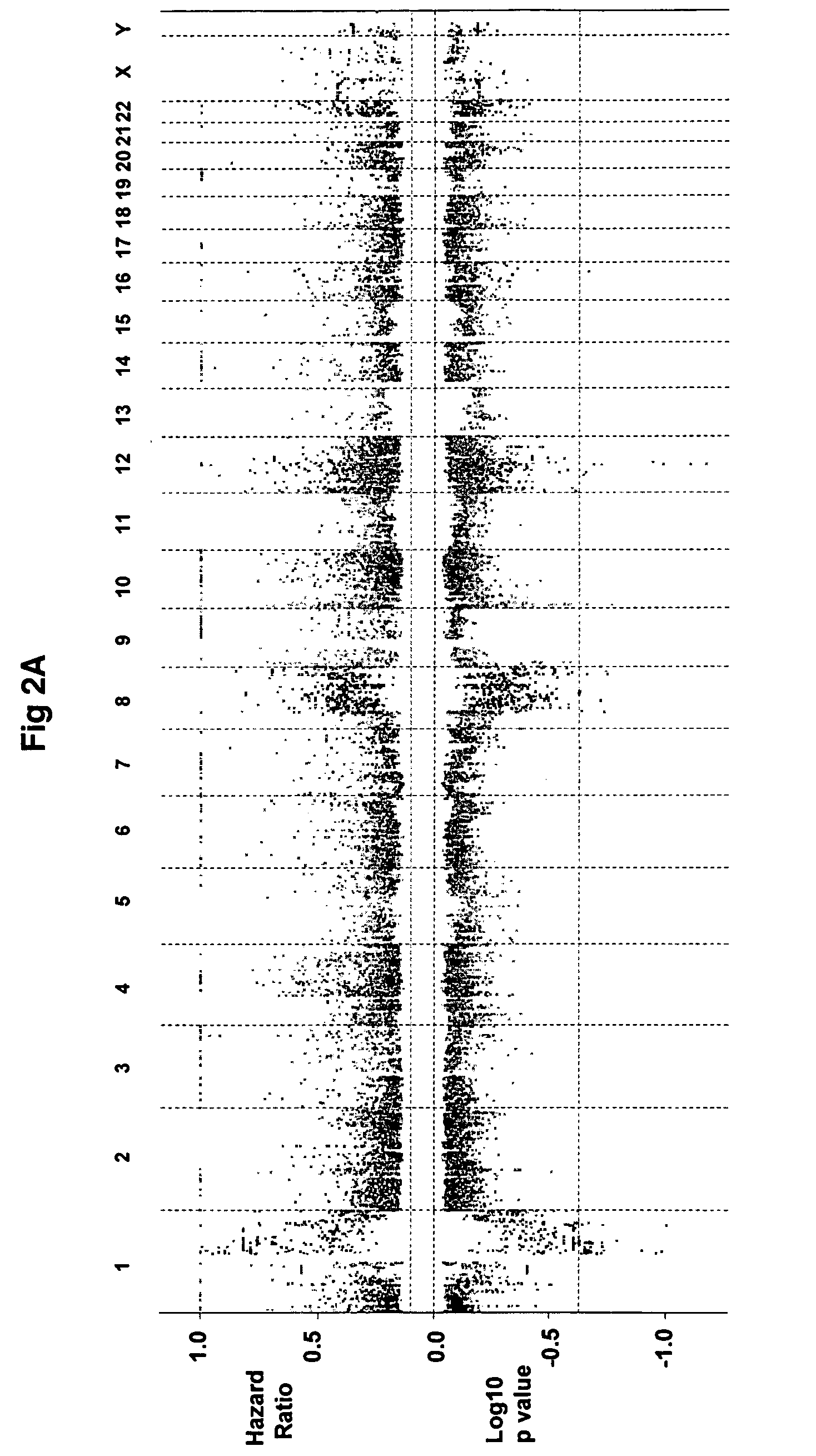Gene expression profiling based identification of genomic signature of high-risk multiple myeloma and uses thereof
a multiple myeloma and gene expression technology, applied in the field of cancer research, can solve the problems of chromosomal translocation between, inferior survival, further amplified, and prior art deficient identification, and achieve the effects of high-risk index, and increasing the risk of death
- Summary
- Abstract
- Description
- Claims
- Application Information
AI Technical Summary
Benefits of technology
Problems solved by technology
Method used
Image
Examples
example 1
Study Subjects
[0041]Bone marrow aspirates were obtained from 92 newly diagnosed multiple myeloma patients who were subsequently treated on National Institutes of Health-sponsored clinical trials. The treatment protocol utilized induction regimens followed by melphalan-based tandem peripheral blood stem cell autotransplants, consolidation chemotherapy, and maintenance treatment (Barlogie et al, 2006). Patients provided samples under Institutional Review Board-approved informed consent and records are kept on file. Multiple myeloma plasma cells (PC) were isolated from heparinized bone marrow aspirates using CD138-based immunomagnetic bead selection using the Miltenyi AUTOMACS™ device (Miltenyi, Bergisch Gladbach, Germany) as previously described (Zhan et al, 2002).
example 2
DNA Isolation and Array Comparative Genomic Hybridization
[0042]High molecular weight genomic DNA was isolated from aliquots of CD138-enriched plasma cells using the QIAMP® DNA Mini Kit (Qiagen Sciences, Germantown, Md.). Tumor and gender-matched reference genomic DNA (Promega, Madison, Wis.) was hybridized to Agilent 244K arrays using the manufacturer's instructions (Agilent, Santa Clara, Calif.).
example 3
Interphase Fluorescence In Situ Hybridization
[0043]Copy number changes in multiple myeloma plasma cells were detected using triple color interphase fluorescent in situ hybridization (FISH) analyses of chromosome loci as described (Shaughnessy et al, 2000). Bacterial artificial chromosomes (BAC) clones specific for 13q14 (D13S31), 1q21 (CKS1B), 1p13 (AHCYL1) and 11q13 (CCND1) were obtained from BACPAC Resources Center (Oakland, Calif.) and labeled with Spectrum Red- or Spectrum Green-conjugated nucleotides via nick translation (Vysis, Downers Grove, Ill.).
PUM
| Property | Measurement | Unit |
|---|---|---|
| interphase fluorescent in situ hybridization | aaaaa | aaaaa |
| fluorescent | aaaaa | aaaaa |
| fluorescent in | aaaaa | aaaaa |
Abstract
Description
Claims
Application Information
 Login to View More
Login to View More - R&D
- Intellectual Property
- Life Sciences
- Materials
- Tech Scout
- Unparalleled Data Quality
- Higher Quality Content
- 60% Fewer Hallucinations
Browse by: Latest US Patents, China's latest patents, Technical Efficacy Thesaurus, Application Domain, Technology Topic, Popular Technical Reports.
© 2025 PatSnap. All rights reserved.Legal|Privacy policy|Modern Slavery Act Transparency Statement|Sitemap|About US| Contact US: help@patsnap.com



